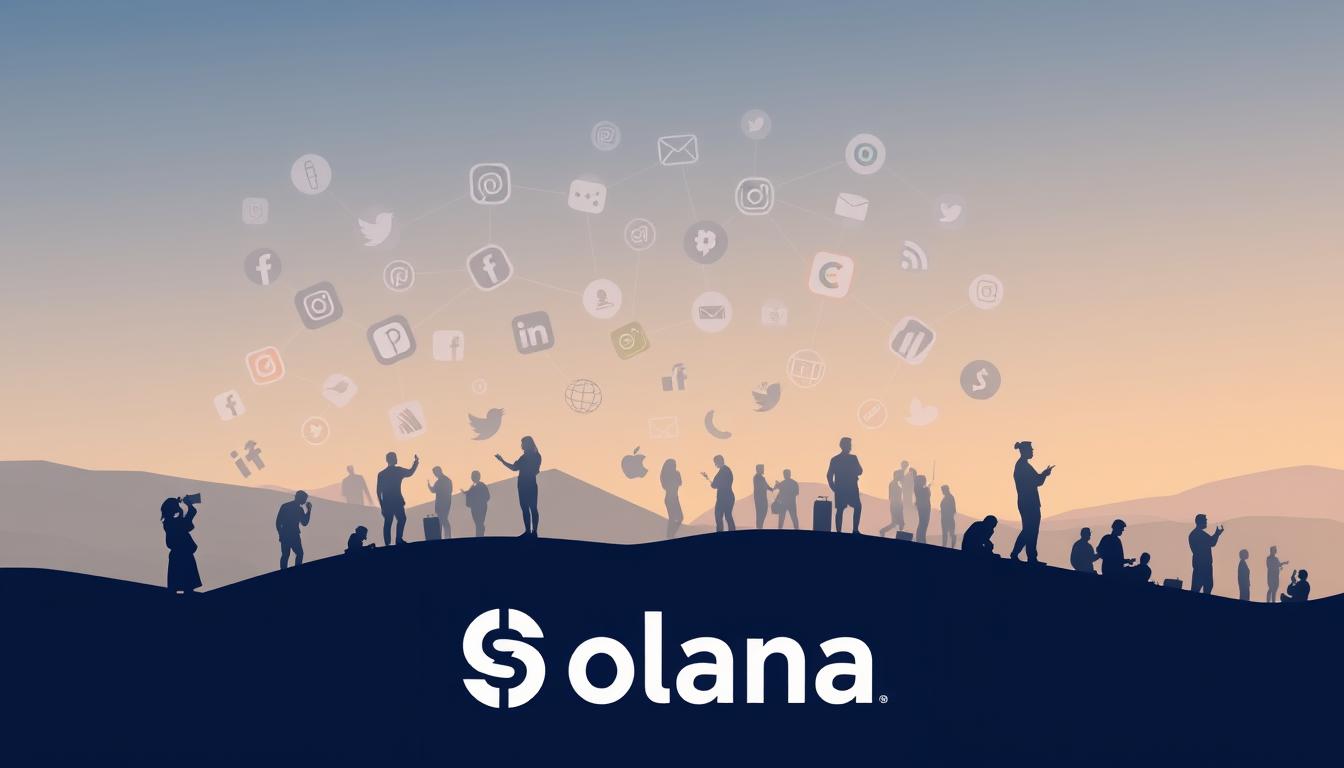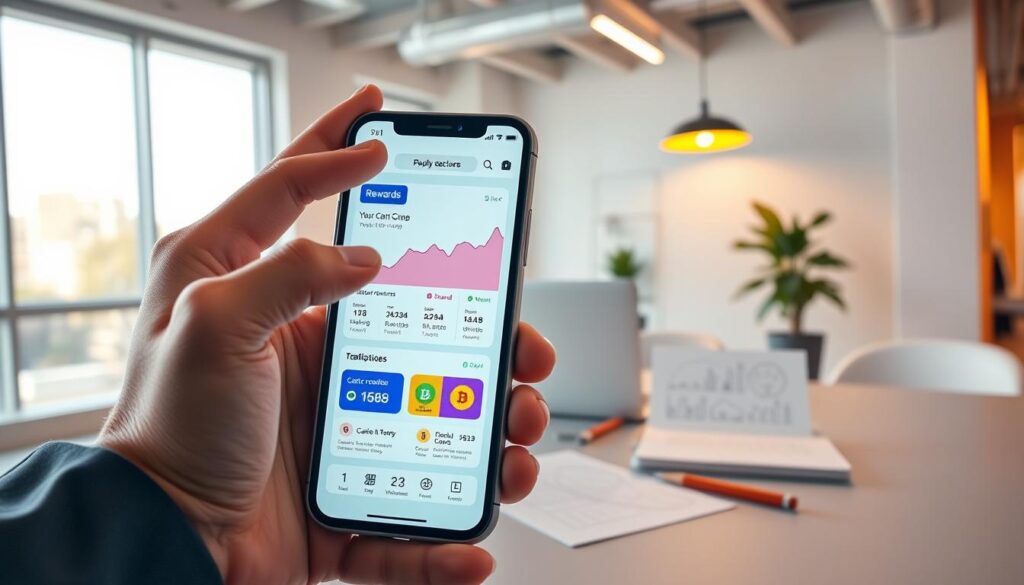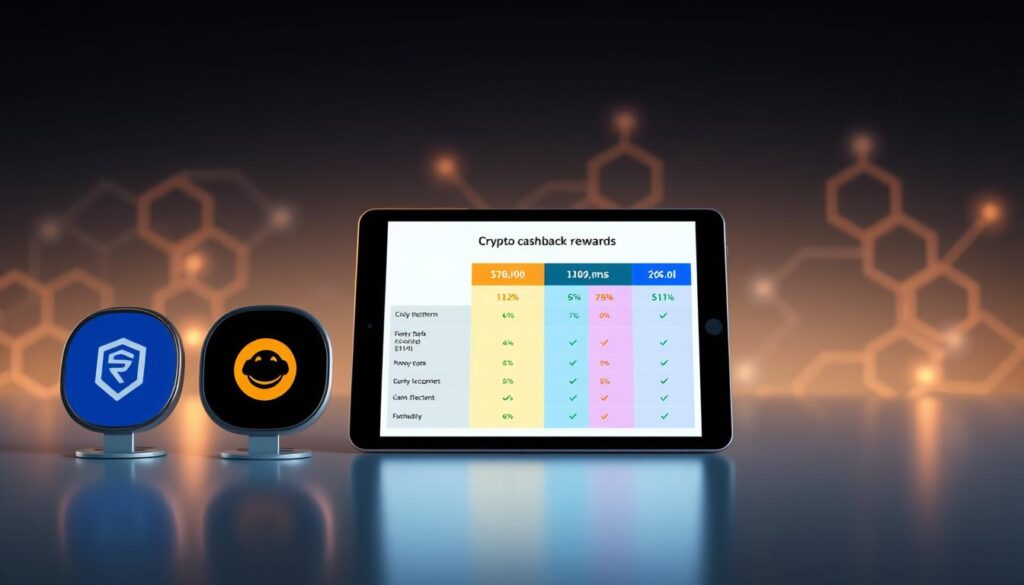Now Reading: Top Solana Projects to Watch in 2025 – Token Metrics Moon Awards
- 01
Top Solana Projects to Watch in 2025 – Token Metrics Moon Awards
Top Solana Projects to Watch in 2025 – Token Metrics Moon Awards
The digital asset world is changing fast. Solana blockchain projects are leading this change. They show what decentralized tech can do.
The cryptocurrency awards help find good investments. Winners are seen as having great growth chances. Savvy investors use this info to grow their wealth.

DeFi protocols are just one exciting area. There are also gaming, NFT, and infrastructure projects. Each offers something special.
It’s key to know how to pick projects. Blockchain innovation needs careful thought. This guide helps spot top chances and make smart watchlists.
Key Takeaways
- Digital asset recognition systems help identify promising investment opportunities
- Diverse project categories span gaming, finance, and infrastructure solutions
- Proper evaluation frameworks are essential for successful project selection
- Strategic analysis helps investors build stronger cryptocurrency portfolios
- Understanding ecosystem dynamics improves long-term investment outcomes
Understanding the Token Metrics Moon Awards Selection Process
Every Token Metrics Moon Award winner goes through a detailed evaluation. This process aims to find the most promising Solana projects. It looks for projects with exceptional talent and solid foundations.
The selection uses data and expert opinions. This mix creates a reliable way to spot top opportunities.
Token metrics analysis is key to this system. It checks various project data to understand each candidate’s strengths and weaknesses. This method helps avoid bias and focuses on measurable performance indicators for success.
Evaluation Criteria for Solana Projects
The criteria for award eligibility cover several areas. Innovation is the top factor, looking at how well a project meets market needs or brings new solutions. The team’s expertise is also important, checking the background of the founders and core developers.
Market fit analysis checks if the project solves real problems in the Solana ecosystem. It looks for clear value and user demand. Technological advancement is about pushing boundaries or improving existing solutions.
Community engagement levels are also considered. Projects with growing communities are seen as more viable. The criteria also look at regulatory compliance and legal challenges.
Technical Assessment Framework
The technical framework focuses on code quality and security. Experts review smart contract architecture for robust security and efficient use of resources. Scalability solutions are given special attention, focusing on how they handle Solana’s consensus mechanism.
Integration with the Solana ecosystem is key in technical evaluation. Projects that work well with existing protocols score higher. The framework also looks at development speed and code maintenance.
Blockchain assessment includes stress testing and performance under different network conditions. Projects need to show stability during high traffic and resilience against attacks. Documentation quality and developer resources also matter.
Market Performance Metrics
Market performance metrics show how well a project is doing. Trading volume and user adoption rates indicate success. Total value locked is important for DeFi projects, showing user trust and capital commitment.
Community engagement metrics track social media activity, developer contributions, and user feedback. These help identify projects with real momentum. Solana ecosystem analysis looks at how well projects contribute to network growth.
Revenue generation and sustainability models are carefully examined. Projects need clear paths to profitability and must show they can handle market changes. The metrics also consider partnership quality and strategic alliances.
How to Identify High-Potential Solana Projects
Finding the next big thing in blockchain needs careful study of tech, team skills, and community vibes. Successful cryptocurrency research looks deeper than just numbers. It digs into what makes a project stand out for the long haul. Savvy investors use special tools to spot these gems before they hit the mainstream.
The Solana world is great for finding high-potential crypto projects. It’s open and has a lively community. Projects here often tackle big blockchain problems in new ways. Knowing how to check these out is key.

Key Technical Indicators to Analyze
Looking at how well a project works is vital for blockchain project analysis. How fast it can handle tasks shows its strength. Projects that keep up with demand have solid foundations.
Smart contracts are important for user experience and costs. Fast and efficient contracts save resources and speed up tasks. This is critical as more people use the project.
Seeing how people use the network gives clues about its value. Projects growing steadily show they’re useful. How well they work with Solana’s core shows their smart use of the network.
- Transaction processing speed and consistency
- Smart contract gas optimization levels
- Network bandwidth utilization efficiency
- Cross-program invocation capabilities
- Validator node distribution patterns
Team and Development Activity Assessment
The team behind a project is key to its success. Knowing the founders’ past helps predict the project’s future. Experienced teams face challenges better and make smart choices for growth.
Developers familiar with Solana show they know the platform well. Teams with a track record of success understand its quirks. Having a good advisory board adds credibility and connections.
GitHub activity shows how active a project is. Regular updates and community help show it’s growing. Projects that keep improving show they’re committed.
- Review founder LinkedIn profiles and previous ventures
- Analyze developer GitHub contribution histories
- Assess advisory board member credentials
- Monitor code commit frequency and quality
- Evaluate technical documentation completeness
Community Engagement Metrics
A strong community is a sign of a project’s future. Solana investment opportunities with active communities show real interest. Active Discord, Twitter, and governance show a healthy ecosystem.
It’s not just about followers. Projects with real engagement and open communication build strong communities. When users create content, it shows they care.
How involved the community is in decision-making matters. High participation in voting shows commitment. Projects with active governance make better choices for the future.
Combining tech skills, experienced teams, and community involvement helps find high-potential crypto projects. This detailed approach helps investors choose wisely, based on real project strengths, not just hype.
Step-by-Step Guide to Evaluating DeFi Projects on Solana
Smart investors use proven methods to check Solana DeFi protocols before investing. The Solana ecosystem is growing fast, but careful evaluation is key to avoid mistakes. This guide helps you make smart choices about decentralized finance investments.
When evaluating decentralized finance, look beyond just price. You need to know the project’s basics, security, and if it will last. Each part gives important clues about risks and rewards.
Analyzing Total Value Locked (TVL)
Total Value Locked shows the dollar amount of assets in a DeFi protocol. It’s a key sign of user trust and adoption. A higher TVL means more community confidence and stability.
TVL analysis starts with looking at historical trends. Look for steady growth, not sudden spikes. Compare the TVL to similar projects for context.
Watch for signs of trouble in TVL data. Sudden drops can mean security issues or users leaving. Check if assets are spread out or concentrated in risky tokens.
Compare TVL to market capitalization and trading volume. A good ratio shows real growth and user interest. High TVL compared to token value might mean sustainability issues.
Assessing Protocol Security and Audits
Security is vital for any DeFi protocol. First, find out which auditing firms have checked the project’s smart contracts. Firms like Trail of Bits and ConsenSys Diligence offer detailed reviews.
DeFi security assessment means reading audit reports, not just if audits exist. Look for vulnerabilities found and how they were fixed. Check if recent code changes were reviewed.
Look at the protocol’s bug bounty program and past security incidents. Active bug bounty programs show a commitment to security. See how the team handled past security issues.
Check for extra security features like multi-signature wallets and emergency pause mechanisms. These show the team’s focus on security.
Understanding Tokenomics and Governance
Token distribution models show a project’s future and fairness. Check how tokens were initially allocated. Too much for the team or investors might lead to selling pressure.
Examine vesting schedules for team and investor tokens. Long vesting periods show commitment, while short ones might mean quick exits.
Governance mechanisms are key for making and implementing decisions. Look for clear voting processes and proposal requirements. Good governance balances efficiency with community input.
See how voting power is distributed among token holders. Uneven voting power reduces decentralization benefits. Check if governance tokens have uses beyond voting.
Look at the protocol’s revenue model for long-term sustainability. Successful Solana DeFi protocols make consistent fees. Unstable token models can harm prices and user trust.
Review how the protocol updates and who controls changes. Clear and community-checked updates protect users from harmful changes.
How to Research Gaming and NFT Projects on Solana
When researching gaming and NFT projects on Solana, it’s key to look at both fun and financial aspects. These projects mix traditional games with blockchain tech for new economic models. Successful Solana gaming projects need to be fun and have solid financial plans.
The gaming scene on Solana has grown fast because of low costs and quick transactions. Players can trade easily without high fees. This makes for a better experience than other blockchain networks.
Evaluating Game Mechanics and User Adoption
Game mechanics are the base of any good gaming project. Quality gameplay keeps players coming back and growing the game. Start by checking the game’s core mechanics and how players progress.
Key metrics to look at include:
- Daily and monthly active users
- Average session duration
- Player retention rates over time
- In-game transaction frequency
- Community engagement levels
User adoption patterns show how well a project is doing. Look for steady growth in players. This shows the project is strong and people are talking about it.
It’s important to balance fun and earning. Projects that focus only on making money may lose players. The best projects are fun and offer good economic rewards.
NFT Marketplace Integration Analysis
How well a project integrates with NFT marketplaces is key. Seamless integration with big Solana marketplaces makes trading easier and players happier. Check which marketplaces support the project’s NFTs.
Look at the technical side of the marketplace too. Check:
- Transaction speed and reliability
- Cross-platform compatibility
- Asset metadata standards
- Smart contract security measures
- Royalty distribution systems
Liquidity shows market confidence in the project’s assets. High trading volumes mean strong demand and active players. Low liquidity might mean interest is dropping or there are technical issues.
When analyzing NFT marketplaces, look at fees and how revenue is shared. Projects with fair fees tend to do better. High fees can push players to other platforms.
Revenue Model Assessment
Revenue models are key to a project’s long-term success and investor returns. Diversified revenue streams help during market ups and downs. Relying on one source of income is riskier.
Common ways to make money include:
- Play-to-earn token rewards
- NFT sales and marketplace fees
- Premium subscriptions or passes
- In-game purchases and upgrades
- Tournament entry fees
Play-to-earn models need careful look at token distribution and inflation. Unsustainable reward systems can devalue tokens and lose players. Look for balanced tokenomics and clear token use.
Check how much it costs to get and keep players. High costs without good returns mean poor business. Successful projects keep making money while growing their player base.
Being open about finances helps investors make better choices. Projects that share financial details show they trust their model. Regular financial updates build trust with the community and investors.
Look at the competition when judging revenue chances. Projects in crowded markets need something special to stand out. Being innovative in gameplay or money-making can give an edge.
Identifying Top Solana Projects in 2025 – Token Metrics Moon Awards Winners
The Token Metrics Moon Awards highlight the best Solana projects. They show how blockchain is growing. Winners have shown great growth, innovation, and market impact in 2024 and early 2025.
These awards look at hundreds of Solana projects. Each winner is a big step forward in their field. They use numbers and expert opinions to find the best.
Award Categories and Selection Methodology
The Solana award categories cover all parts of the blockchain world. They look at five main areas. This makes sure all types of innovation are recognized.
The Best DeFi Protocol category looks at value locked, user adoption, and security. Winners have grown well and have strong financial systems. Innovation in yield generation and working with other chains are key.
For Most Innovative Gaming Project, they look at user engagement, game quality, and token use. Projects need to keep players coming back and make money.
Outstanding Infrastructure Development awards go to projects that improve Solana. Winners often give tools to developers, help the network grow, or make it faster. They are chosen for their technical skill and how well they work with others.
Performance Benchmarks for Winners
The top performing crypto projects meet high standards. They grow their user base fast and keep transactions steady. This shows they are doing well.
Winners also make money in different ways and have a positive cash flow. Many make over $1 million a month. This shows they are sustainable.
They also reach important technical milestones. This includes launching on mainnet, passing security audits, and getting big partnerships. Winners are fast and efficient, often beating the average. Smart contract efficiency and gas optimization are key.
Market impact is also important. Winners influence the Solana ecosystem a lot. They attract developers, get used by other projects, and increase network activity. This shows they are making a big difference.
Innovation Factors in Project Selection
The blockchain innovation awards focus on new tech and business ideas. Winners often solve big problems or make new uses for blockchain. They are recognized for their unique solutions.
They look for new consensus methods, cryptography, and user experiences. Projects that solve real-world problems get extra points. Cross-chain interoperability and making things faster are highly valued.
Winners also make things easy to use and get more people involved. They have simple interfaces, work well on phones, and make it easy to start. Projects that connect traditional and decentralized finance are also recognized.
The committee looks at each project’s future impact. Winners have clear plans for growth and help the Solana community. This shows they are committed to making a difference.
How to Analyze Solana Infrastructure Projects
When analyzing Solana infrastructure, we look at key parts that keep the network running smoothly. These projects help the ecosystem grow, attract developers, and stay reliable. Understanding infrastructure quality helps investors find projects that will grow with Solana.
Infrastructure projects have different roles in Solana. Some improve network speed and help validators. Others make it easier for programmers to build on Solana with tools and APIs.
The best projects are both technically sound and widely adopted. They solve everyday problems for developers and users. It’s important to evaluate each project’s performance and future prospects.

Network Performance and Scalability Metrics
First, we check how fast transactions are processed and how much data can be handled. Solana’s projects should perform well under different loads. We look at transactions per second, how fast blocks are confirmed, and network uptime.
Scalability metrics show how projects handle more users. We watch how validators perform under different conditions. It’s also important to see how projects keep services running smoothly during busy times.
Good infrastructure projects help Solana handle more transactions efficiently. Look for innovations that reduce congestion or improve resource use.
- Transaction processing speed consistency
- Network uptime and reliability statistics
- Validator performance optimization
- Resource utilization efficiency
Developer Tool Ecosystem Evaluation
When evaluating developer tools, we look at their quality and completeness. Great projects offer detailed SDKs, APIs, and documentation that make development easier. We also check how easy it is for new developers to join.
We review support resources and community engagement. Active communities and quick technical support are good signs. Look for projects that regularly update their tools based on feedback.
Check out integration examples and use cases. Good tools should have clear guides and examples. Projects that listen to developers and update tools often are the best.
Integration Capabilities Assessment
Integration capabilities show how well projects work with other Solana protocols. Successful projects work well with DeFi, NFT, and gaming platforms. We test how easy it is to connect new projects to existing infrastructure.
Cross-chain functionality is key for infrastructure projects. We see how well projects support bridges to other blockchains. Strong integration capabilities attract more users and developers.
Watch for partnership announcements and collaboration patterns. Projects with wide integration support attract more developers and users. Look for standardized protocols for long-term compatibility.
Step-by-Step Evaluation of Solana DeFi Protocols
Knowing how to evaluate Solana DeFi protocols is key to making smart investments. The fast world of DeFi needs a systematic way to check protocols. Effective Solana DeFi evaluation looks at many things, from basic liquidity to complex cross-chain integrations.
Smart investors avoid common DeFi mistakes by doing deep analysis. Solana’s low costs and high speed are big pluses. But, these benefits come with risks that need careful thought.
Using a structured way to check protocols helps find projects with real growth. This method focuses on three main areas that show if a protocol will succeed and give good returns.
Liquidity Pool Analysis
Liquidity is key for any DeFi protocol on Solana. Comprehensive liquidity pool analysis starts with looking at the total value locked (TVL) in different pools. More TVL means users trust the protocol more and trading is better.
Looking at pool depth shows how much trading a protocol can handle without big price changes. Deep pools with steady trading show a protocol is doing well. Shallow pools might have big price jumps during big trades.
Looking at trading volume patterns gives clues on how well a protocol is doing. Daily volume that stays steady means users are active. Big volume spikes could mean fake activity or unsustainable rewards.
How fees are set is key to a protocol’s long-term success and keeping users. Competitive fee models balance making money with keeping users happy. Protocols that are clear about fees tend to keep a strong community.
Calculating impermanent loss helps understand the risks of providing liquidity. Knowing the possible losses from price changes protects investors from surprises. Tools for this should take into account Solana’s unique market.
Yield Farming Opportunities Assessment
Yield farming is a big draw in Solana DeFi. Effective yield farming strategies need to look at rewards and how sustainable they are. High APYs can hide big risks that new investors might miss.
Looking at token emission schedules shows if farming rewards can last. Protocols with controlled emissions tend to have more stable token prices. Unlimited emissions can lead to quick price drops and unsustainable yields.
What tokens can do within the protocol shows their real value. Tokens with real uses in the ecosystem tend to keep their value better. Governance rights and fee-sharing mechanisms add value to these tokens.
Lock-up periods and vesting schedules affect how flexible investments are. Shorter lock-ups offer more flexibility but might show less commitment from the team. Longer vesting periods suggest more confidence in the protocol’s future.
Looking at risk-adjusted returns helps compare farming options fairly. Calculating returns after considering smart contract risks, impermanent loss, and token volatility gives a clear picture. Diversifying yield farming across multiple protocols reduces risk.
Cross-Chain Integration Capabilities
Modern DeFi protocols often use cross-chain functions to reach more users and liquidity. Cross-chain DeFi protocols on Solana open up new chances but add complexity and risk.
Bridge security is the most important part of cross-chain checks. Well-checked bridges with a good track record lower the risk of losing funds. Multiple security audits and bug bounty programs show a serious commitment to safety.
Which blockchains a protocol connects to affects its user base and liquidity. Connecting to big networks like Ethereum and Binance Smart Chain brings in more liquidity. Choosing networks wisely shows the team’s market understanding.
How fast and cheap transactions are across chains affects user experience. Protocols that keep Solana’s speed while accessing other networks offer better value. Slow or expensive transactions limit adoption.
Liquidity aggregation shows how well protocols combine resources from different chains. Advanced algorithms can offer better prices and less slippage. Advanced routing mechanisms often show strong technical skills.
How protocols govern cross-chain operations is critical. Decentralized governance across chains is challenging. Protocols with clear governance for cross-chain decisions show they are mature.
Partnerships with established protocols boost credibility and function. Strategic partnerships can bring in more liquidity and users. But, they can also create single points of failure that investors should think about.
How to Assess Solana-Based Social and Creator Economy Projects
When looking at Solana social platforms, it’s key to understand user behavior, how money is made, and if the project can last. The social and creator economy is a fast-growing part of blockchain. It lets creators connect directly with fans and keep control over their digital work.
Investors need to check many things when looking at creator economy projects. They should look at the tech, how easy it is to use, and how creators make money. These platforms are different from old social media because they’re based on blockchain.

To do well, you need to see how these platforms meet both creator and user needs. Blockchain gives benefits like transparency and ownership, but it also makes things more complex. This includes getting users to join and stay.
User Base Growth Analysis
User growth analysis is the base of any social platform check. Seeing if users keep coming back shows if the platform is worth it. Look at how many people are active each day and month, and how well they stick around.
Important things to watch include:
- New user sign-ups and how well they get started
- How much content creators make and how often
- How much people interact with each other’s posts
- How long people stay on the site and how often they come back
- Where in the world users are from
It’s important to tell real growth from fake. Real engagement grows steadily, not suddenly. Look for steady growth that matches with updates and marketing.
Signs of a healthy community are important. Look at forums, the quality of user content, and how happy people are. These signs often show if a platform will do well in the long run, more than just how many users it has.
Creator Monetization Features
How creators can make money is a big draw for them. Content monetization blockchain solutions offer ways to make money that old platforms can’t. This includes direct payments from fans, selling NFTs, subscriptions, and more.
Key money-making features include:
- Direct tips and small payments
- Subscriptions for special content
- Creating and selling NFTs
- Sharing ad revenue
- Using tokens to reward creators
How creators get paid is very important. Platforms that pay quickly and fairly tend to attract better creators. Low fees and not taking too much of the money creators make are big pluses.
Keeping creators happy is key. Good platforms see creators earning more over time and getting more involved. Watch how many creators move from old platforms to new ones to see where the market is going.
Platform Sustainability Metrics
Platform sustainability means looking at how it makes money, its token system, and how it stands out. A good platform makes money in ways that benefit everyone involved. It should be able to make money without hurting the user experience.
Having different ways to make money helps a platform stay stable. This includes fees, subscriptions, and ads. Platforms that rely on just one way to make money are riskier.
Token systems are key in creator economy projects on blockchain. Good token systems help everyone involved and make sure value grows over time. Look at how tokens are given out, what they can do, and how many there are.
How a platform is run affects its future and how involved the community is. Decentralized systems let users help decide what happens next. This builds a strong community but needs to balance being efficient and fair.
Knowing how a platform compares to others shows its strengths and weaknesses. Successful platforms find something special that sets them apart. Innovative user experiences and tools for creators are often what make a platform stand out.
Being able to grow without slowing down is important. Solana’s fast speeds help, but each platform needs to be optimized. Watch how fast transactions are, how well the site responds, and how often it’s up during busy times.
Evaluating Solana Payment and Financial Services Projects
To understand Solana payment solutions, we need to look at how fast transactions are, if they follow the rules, and how well they’re accepted by the market. Many fintech companies are drawn to Solana because it can handle a lot of transactions quickly. They use Solana’s low-cost setup to compete with old-school banks.
Modern blockchain financial services on Solana open up new chances for digital payments. But, to judge them well, we must check their tech, rules, and how people use them. Knowing these helps investors spot projects that can really stand out.
Transaction Volume and Speed Analysis
Transaction speed analysis is key when checking out Solana payment projects. We look at how fast transactions are confirmed, how many can be done at once, and the cost when it’s busy. Projects need to perform well, no matter how many users they have.
Looking at how many transactions happen every day helps us see if people are using the platform. We check how often people use it, how much they spend, and if the number of users is growing. Good payment platforms keep getting more users and transactions over time.
How well a network handles lots of users shows its growth possibilities. If it can settle transactions fast and keep costs low even when it’s busy, it’s built to last. This is important for big companies to use it and for users to keep coming back.
Regulatory Compliance Assessment
Crypto regulatory compliance is a big deal for payment and financial service projects. They have to deal with lots of rules in different places and stay efficient. They need to follow rules on knowing who’s who, stopping money laundering, and getting the right licenses.
How well a project follows the rules affects who they can work with and where they can operate. Projects that are good at following rules can team up with big banks and other financial companies. Having clear rules also helps avoid legal problems.
How a project handles rules in different places shows where they can grow and what markets they’re aiming for. Projects that work in many places show they have good legal setups and can handle different rules. This means they might last longer.
Enterprise Adoption Indicators
Working with big companies is a sign that a project is useful and trusted. Blockchain financial services projects with big clients show they’re reliable and have real value. These partnerships can also bring in more money and keep it stable.
How well a project can work with other systems is key for getting big clients. Projects that make it easy to integrate, offer custom solutions, and are flexible attract more business. Being flexible helps meet different needs of big companies.
Seeing how many businesses are using a project and how much they’re spending shows it’s working. Projects that keep growing in business-to-business payments are a good sign. These signs often mean the project will keep growing and doing well.
It’s more important to have good partners than many when looking at big company adoption. Working with well-known banks, payment processors, or tech companies shows a project is serious and trusted. These partnerships can open up new customers and make the project more credible in traditional finance.
How to Monitor Real-World Asset (RWA) Tokenization Projects
Watching RWA projects on Solana needs a careful plan. You must check if assets are real, if laws are followed, and if the market is strong. Real-world asset tokenization links old finance with new tech. Investors need the right tools to judge these projects well.
There are three main areas to look at. Each one has its own challenges and chances. Knowing these helps spot good projects and avoid bad ones.

Asset Backing Verification Process
Asset backing verification is key for any good RWA project. It makes sure tokens match real assets. Investors should look at how assets are kept safe.
Checking documents is vital. Projects must show they own assets legally. Third-party audits make these claims more believable.
How assets are valued is also important. Experts should use clear methods to value assets. Regular checks keep token prices right.
Legal Framework Compliance
Following laws is hard for RWA projects Solana teams and investors. Laws change a lot, depending on where you are and what asset you have. It’s important to know who owns what and how to transfer it.
Rules about securities matter a lot for tokenized assets. Projects must follow these rules to stay out of trouble. Legal opinions from experts are very helpful.
Dealing with laws in different countries makes things even more complicated. International investors face extra rules. Knowing these rules helps avoid legal problems later.
Market Demand Assessment
Tokenized assets analysis needs a good look at market demand. How easy it is to buy and sell tokens is key to success. Seeing if there’s a lot of trading shows interest.
How prices are set is important too. Looking at trading volume shows real interest, not just hype. Market depth analysis shows if trading stays strong.
Who is buying tokens gives clues about what people want. Seeing big investors join shows more people are interested. These things, along with top altcoins for 2025, shape the RWA world.
Doing well means looking at all three areas together. This way, investors can make smart choices about real-world asset tokenization on Solana.
Step-by-Step Guide to Tracking Project Development Progress
Keeping an eye on project development progress is key. It shows how committed and skilled a team is. Project development tracking helps investors see which Solana projects are moving forward and which are not. This method uses technical analysis and milestone checks to see real progress.
To track progress well, you need many data sources and regular checks. Teams that keep their promises usually do better in the blockchain market. Knowing how to track this way helps investors make better choices based on real evidence.
GitHub Activity Monitoring
GitHub activity analysis is a key way to see how a project is doing. It shows how productive the team is, the quality of their code, and how fast they work. Active projects have regular commits and many contributors.
Important GitHub metrics include:
- Daily and weekly commit patterns
- How many active contributors there are and their work levels
- How fast issues are solved and the backlog is managed
- Code review and merge request handling
- Updates to documentation and technical specs
Look at the commit history for steady activity, not just a lot of commits. Projects with big gaps in activity might have problems with resources or team stability. Look for steady, ongoing work that shows long-term commitment.
It’s also important to see if a project has many contributors. Projects with just a few developers are riskier than those with many. Check the contributors’ profiles to see their experience and past work.
Roadmap Milestone Tracking
Checking roadmap milestones shows how well a project is planned and executed. Blockchain project milestones are key to measuring progress. Teams that meet their deadlines show they can manage projects well.
Good milestone tracking means:
- Writing down original plans and what’s included
- Checking if deadlines are met
- Seeing if milestones are done well and completely
- Looking at changes to the scope and why they happened
- Tracking how well teams communicate during delays
Focus on milestone complexity and realistic timelines. Projects that always promise too much often struggle to deliver. Look for teams that give clear technical plans and success criteria for each milestone.
Delayed milestones aren’t always bad if teams explain the reasons well. But repeated delays without clear reasons suggest poor planning or technical issues. It’s often more important to focus on quality than meeting deadlines exactly.
Partnership and Integration Updates
Partnerships and integrations are key to a project’s success. Development progress monitoring should include news on partnerships, integrations, and ecosystem collaborations. These partnerships can bring important resources and market access.
Watch for updates on partnerships through:
- Official announcements and what the partnership covers
- Progress on technical integrations and when they’ll be ready
- Joint marketing efforts and development projects
- Participation in the ecosystem and community work
It’s important to tell the difference between marketing partnerships and real technical collaborations. Good partnerships involve code sharing, resources, or joint product development. Simple logo swaps or promotional deals are less valuable.
Check how well integrations are done and if they work. Projects with many partnerships but no working integrations might have technical issues. Look for proof of partnership value through user numbers or feature use.
Regular updates on partnerships show a team is actively working on business growth. Teams with strong ecosystem ties often get better resources, talent, and market chances. This teamwork is linked to long-term success and growth.
How to Stay Updated on Emerging Solana Projects
To keep up with new Solana projects, you need a smart way to gather info from various sources. The blockchain world moves fast, with new chances popping up quickly. Successful investors and developers use detailed systems to keep track of Solana project updates well.
Creating a strong info network means using both official sources and community feedback. This mix helps you get both confirmed news and early talks. The goal is to find the right balance between speed and accuracy when looking at new chances.
Official Communication Channels
Official channels are the best place to start for project updates. They give you straight facts from the teams themselves. Primary official channels include project sites, blogs, and verified social media.
Signing up for newsletters is a top way to get updates fast. Many Solana projects send out emails with special news before it’s public. These newsletters often have exclusive info.
Twitter is a key place for real-time updates from teams. They share big news, partnerships, and updates with followers. Following official accounts helps you spot real info from rumors.
- Project official websites and documentation portals
- Verified social media accounts on Twitter and LinkedIn
- Official newsletters and email subscription lists
- Project-specific blogs and medium publications
- GitHub repositories for technical development tracking
Community Forums and Social Media
Community sites often share news before it’s official. Blockchain community forums are like early warning systems. Discord and Telegram groups let you connect with teams and communities directly.
Reddit sites like r/solana and specific subreddits are full of discussions. People share tips on new projects and market trends. But, it’s important to sort out the good info from the bad.
Twitter is the top spot for crypto talks. Following influencers, developers, and leaders can lead to new project finds. Making lists helps keep your info organized.
- Join official Discord servers for direct community access
- Monitor Telegram channels for real-time discussions
- Follow relevant Reddit communities and discussions
- Create Twitter lists of key ecosystem participants
- Engage with community-driven research platforms
Developer Conference and Event Coverage
Industry events are the best way to see new projects and trends. Crypto conference coverage often shows projects before they’re public. Hackathons are great for seeing new ideas that could be big.
Solana events like Breakpoint give a full view of the ecosystem. These events have project showcases, tech talks, and networking. Live streaming and recorded sessions make it easy to join in from anywhere.
Developer workshops and meetups offer deep dives into project tech. These events often have hands-on demos and tech talks. Following event organizers and speakers can really expand your network.
Virtual events have made it easier to see global ecosystem updates. Many now offer both in-person and online options. This has made it easier for people everywhere to find new project chances.
Building Your Solana Project Watchlist for 2025
To build a good Solana investment watchlist, track projects across various sectors. Start by grouping them into DeFi, gaming, NFTs, and infrastructure. This helps spread out your investments. With Solana trading at $187 with a $90 billion market, there are many chances to make smart investments.
Make a list of what to look for in each project type. Watch technical indicators, team work, and how active the community is. Decide when to add or remove projects based on how they do and how much risk you’re okay with.
Plan your crypto portfolio by setting percentages for different types of projects. Keep an eye on progress, partnerships, and how well they’re doing in the market every week. Use tools to track GitHub, social media, and trading volumes. This helps you stay up-to-date on each project’s journey and its chances of success.
FAQ
What are the Token Metrics Moon Awards and how do they select Solana projects?
The Token Metrics Moon Awards highlight the top Solana projects. They use a detailed process to pick the best. This includes looking at innovation, team skills, market fit, and tech advancements.
They check code quality, security, and how well projects scale. They also look at market performance like trading volume and user adoption.
What key technical indicators should I analyze when evaluating Solana projects?
Look at how fast transactions are, how efficient smart contracts are, and how well the network is used. Check if projects work well with Solana’s core.
Also, watch GitHub for activity, code updates, and team growth. See if projects use Solana’s fast and cheap architecture well.
How do I assess the team behind a Solana project?
Check the founders’ past work, developer skills, and advisory board quality. Look at their GitHub activity, code quality, and team updates.
Good teams are open, share updates, and have a proven track record in blockchain.
What should I look for when analyzing DeFi projects on Solana?
Look at TVL trends, security audits, and tokenomics. Check liquidity, yield farming, fees, and cross-chain integration.
Make sure audits are real and understand how tokens are distributed and governed.
How do I evaluate gaming and NFT projects in the Solana ecosystem?
Check game quality, player retention, and economy sustainability. Look at NFT marketplaces, asset liquidity, and compatibility.
Examine revenue models, including play-to-earn and NFT sales. This shows if the project can grow financially.
What makes Solana infrastructure projects worth monitoring?
Look for projects that improve network performance and offer great tools for developers. Check transaction speeds, uptime, and validator performance.
Also, look at APIs, SDKs, and documentation quality. These projects can grow a lot.
How can I verify the legitimacy of real-world asset (RWA) tokenization projects?
Check if assets are properly backed and valued. Look at legal compliance, property rights, and regulatory needs.
Understand market demand and liquidity for tokenized assets. This ensures the project is real and viable.
What are the best ways to monitor ongoing project development?
Track GitHub for code updates, contributor activity, and issue fixes. Watch for roadmap milestones, realistic timelines, and partnerships.
Regularly check development speed to see which projects are active and which are not.
Where should I look for information about emerging Solana projects?
Follow official channels like websites, newsletters, and social media. Join community forums like Discord and Reddit for early news.
Attend developer events and hackathons where new projects often debut.
How do I assess community engagement for Solana projects?
Look at social media, Discord, governance participation, and user content. Strong communities are active, discuss development, and participate in governance.
Avoid projects with fake engagement or bots.
What regulatory considerations should I be aware of when evaluating Solana projects?
Know about KYC/AML, licensing, and financial regulations. This is key for DeFi, payments, and RWA projects. Projects with clear compliance strategies are more sustainable.
How should I diversify my Solana project watchlist?
Include projects from different areas like DeFi, gaming, NFTs, infrastructure, payments, and social platforms. Balance new and established projects. Consider market size, development stage, and project types.
What tools can help me track and analyze Solana projects effectively?
Use blockchain explorers like Solscan, DeFiLlama for TVL, and GitHub for development. Tools for tracking portfolios, social media, and project dashboards help organize research.
How do I identify potentially problematic Solana projects?
Be wary of anonymous teams, unrealistic promises, and missing security audits. Watch for suspicious tokenomics and artificially inflated metrics. Look for poor communication and missing technical details.
What role does Total Value Locked (TVL) play in evaluating DeFi projects?
TVL shows user confidence and capital in DeFi. Analyze TVL trends, compare projects, and understand asset composition. But remember, TVL can be manipulated, so use it with other metrics like unique users and transactions.












